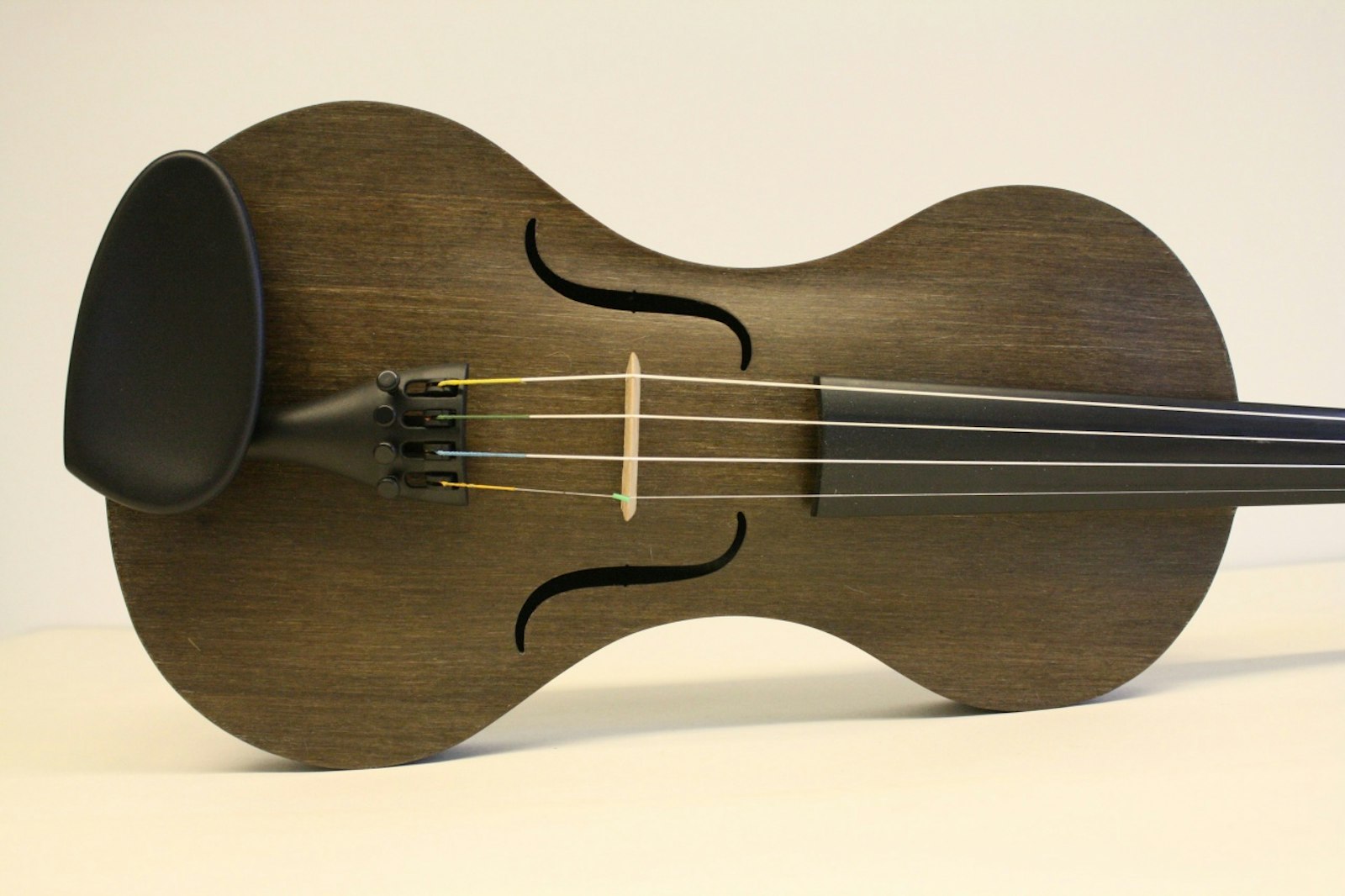de Velde
Strijkinstrumenten uit vlas
These instruments are made by combining an ancient craft (violin making) with high-tech materials and production techniques.
The instruments allow one to dream of new sounds and offer new possibilities for the application of sustainable local materials as well as for the craft of their makers. For example, flax is an artisanal material with a rich local history in Flanders. Once processed into high-tech flax fibre, it is extremely strong and ultra-lightweight. Ideal properties for a musical instrument such as a violin. The study conducted prior to production of the musical instruments puts flax fibre on the map as an ecological (and local) alternative to other composite materials such as carbon fibre or glass fibre. Using this extremely strong material makes the instruments less fragile than traditional wooden instruments. Even though the best wooden violins can last a very long time, their maintenance is still highly intensive. Instruments made from flax fibre require less maintenance and are thus more resistant to the test of time. In the long term it makes them cheaper than violins produced on a large scale, which regularly need to be repaired or replaced. Violins made of flax fibre are also far less susceptible to fluctuations in temperature or humidity, which means they are always reliable for musicians, both indoors and outdoors. The study is an interdisciplinary collaboration between designers, musical instrument makers, material experts and musicologists. The flax fibre instruments are produced by the violin maker entirely by hand. This means that other artisanal instrument makers can easily duplicate the production method. And, not unimportant: a violin with a flax fibre soundboard was the favourite of experts during scientific listening tests.

